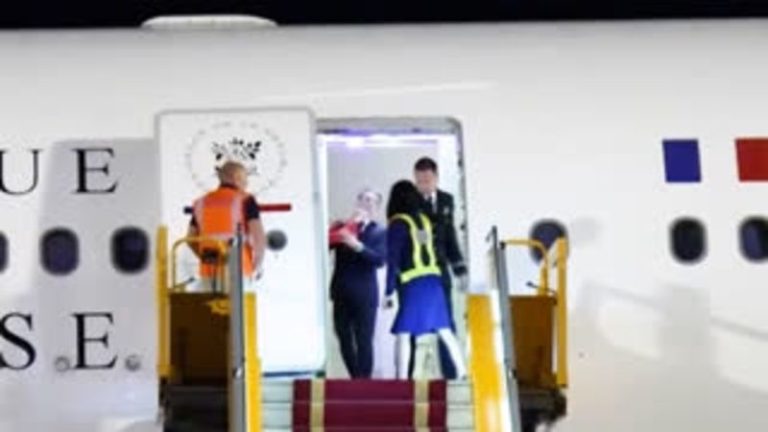Macron Video Fuels Russian Disinformation Campaign
A seemingly innocuous video of French President Emmanuel Macron and his wife, Brigitte, disembarking a flight has become the latest fodder for Russian disinformation efforts. The video, which captured a brief interaction between the couple, shows Brigitte Macron gently pushing her husband as they navigate the aircraft steps. While the exchange appeared to be a lighthearted moment, it quickly gained traction online, catching the attention of Russian troll accounts and state-media outlets, who seized the opportunity to twist the narrative.
The video’s virality provided fertile ground for manipulation. Russian trolls and state-sponsored media outlets amplified the video across various social media platforms, embellishing the interaction with false narratives portraying President Macron as henpecked or under the control of his wife. These distortions aimed to undermine Macron’s authority and image, playing into existing narratives that question his leadership and decision-making. This incident mirrors previous attempts to utilize out-of-context clips and fabricated stories to sow discord and cast doubt on the French president’s credibility.
President Macron himself addressed the viral video, dismissing it as a simple marital "bicker," a commonplace occurrence within any relationship. He attempted to downplay the significance of the interaction, suggesting it was a private moment taken out of context. However, his response did little to quell the escalating disinformation campaign orchestrated by Russian actors. The Kremlin’s persistent efforts to portray Western leaders in a negative light have intensified in recent years, exploiting social media’s rapid information dissemination to reach wider audiences.
This latest episode highlights the evolving nature of disinformation tactics employed by Russia and its proxies. The strategy of leveraging seemingly trivial incidents and amplifying them through coordinated online campaigns underscores the vulnerability of even mundane moments to manipulation in the digital age. The seemingly insignificant video of the Macrons transformed into a weaponized narrative, demonstrating how easily disinformation can spread and potentially influence public perception.
The incident underscores the challenge of combating disinformation in the digital sphere. The rapid spread of manipulated narratives and the ease with which they can be disseminated across social media platforms require constant vigilance. Efforts to debunk false information often struggle to keep pace with the speed of online dissemination. This necessitates a multi-pronged approach, involving fact-checking initiatives, media literacy education, and platform accountability, to counter the pervasive nature of online disinformation campaigns.
The Macron video incident is not an isolated occurrence. It forms part of a broader pattern of Russian disinformation campaigns targeting Western leaders and institutions. These campaigns often aim to sow division, undermine public trust, and interfere in democratic processes. From fabricated news stories to manipulated videos, the tactics employed are constantly evolving, requiring ongoing efforts to identify, expose, and counter these malicious activities. Understanding the nature and scope of these campaigns is crucial to safeguarding against their potentially damaging impact on democratic societies. The incident serves as a stark reminder of the ongoing challenge posed by disinformation in the digital age and the need for continuous vigilance and proactive measures to mitigate its effects.


